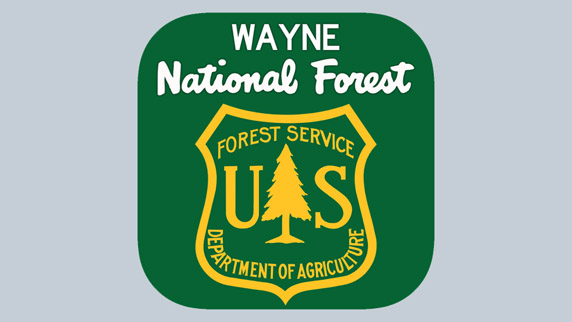Wayne National Forest plans spring prescribed fires
Published 12:00 am Tuesday, March 1, 2022
Burn window is Feb. 25 – May 1
NELSONVILLE — This spring, the Wayne National Forest is planning prescribed fires in nine areas totaling up to 4,515 acres. The planned burn areas are located on the Athens and Ironton Ranger Districts, private lands, and the Ohio Department of Natural Resources Wallace H. O’Dowd Wildlife Area.
Prescribed burns are intentional fires that are managed by professional wildland firefighters.
Fire plays an important role in the oak forests of southeast Ohio. The occasional low-intensity fire keeps oak forests healthy and resilient by giving oaks and other fire-tolerant trees a competitive edge over shade-loving tree like maples and beeches.
“Oak forests are crucial for the survival of native plants and animals, and they’re important to our society,” acting forest supervisor Joe Koloski said. “Using prescribed fire allows us to sustain these important ecosystems — and all the life that depends on them — into the future.”
Depending on weather and landscape conditions, fire crews may use traditional ground-based or aerial ignition methods to conduct prescribed burns. Aerial ignition involves the use of a plastic sphere dispenser machine mounted in a helicopter to drop ignition spheres onto a targeted area.
“When we perform aerial ignition, it can allow us to do several weeks’ work of burning over a much shorter period.” Koloski said. “This process also reduces risk for our firefighters.”
Those living near the prescribed burn locations may see large smoke columns, but there is no need for alarm and the smoke should dissipate quickly.
Summary details about the local planned prescribed burns are below:
Ironton Ranger District
• Sunny Oaks Prescribed Burn, Units 9 and 11
Size: Approximately 200 acres
Location: Gallia County, Perry Township, near the following areas: Skyline Road and County Road 52. Symmes Creek and County Road 58
• Sunny Oaks Prescribed Burn, Units 4, and 24-29
Size: Approximately 1,087 acres
Location: Lawrence County, Symmes Township, near the following areas: County Roads 210 and 320, County Roads 48 and 51
• Sunny Oaks Prescribed Burn, Unit 22
Size: Approximately 208 acres
Location: Lawrence County, Aid Township, near the following areas: Five Forks-Aarons Creek Road and Rucker Ridge Road
• Fradd Hollow Prescribed Burn
Size: Approximately 2.7 acres
Location: Lawrence County, Lawrence Township, near the following areas: County Road 5
Prescribed fires are performed under specific weather conditions. The Wayne National Forest follows strict guidelines for conducting prescribed burns, and uses environmental factors including temperature, humidity, atmosphere stability, wind direction, wind speed and smoke dispersion. If any of these conditions are not within limits, the burns will be postponed.
Through the use of prescribed fire, the Wayne National Forest hopes to accomplish these goals:
• Encourage the growth of a diverse array of plant life, including sun-loving trees, forbs, and grasses.
• Ensure oaks remain the cornerstone of our forests. Oaks provide food for many different animals. Using fire helps bring more sunlight into our forests, which is required for the growth of young oak trees. Without fire, shade-tolerant species will take over and eventually replace oaks as the dominant tree group in our forest.
• Protect human property by reducing the amount of down, dead wood in the forest. That way if a wildfire happens, it would be less intense, and potentially easier to control.
• Perpetuate oak barrens and woodlands found within the forest. These rare, remnant plant communities provide habitat for many uncommon and declining species. Maintaining these open woodland conditions with prescribed fire increases biodiversity in both plant and animal species.
• Use prescribed fire to keep oak present on the landscape by promoting and perpetuating existing oak regeneration to opportunistically take advantage of canopy disturbance events.
• Enhance scenic values by reducing understory stem density.
• Conserve fire-adapted plant and animal biodiversity and maintain and restore oak ecosystems.
• Promote uneven aged forest diversity to benefit forest wildlife.
• Increase the vigor of forests to resist insects and diseases.






